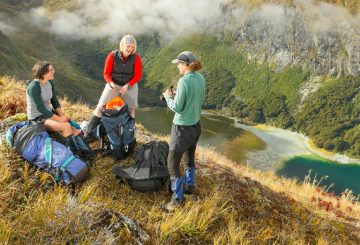스투 윌러비는 백파이프 연주를 좋아하는 것으로 유명했습니다.그는 종종 L.G. Lawrie의 백파이프에서 ‘어메이징 그레이스’나 ‘스코틀랜드 더 브레이브’ 같은 노래를 연주하곤 했습니다.아내 발은 그가 백파이프를 연주하며 복도를 오르내리던 것을 기억합니다.그의 음악 소리는 집안을 가득 채웠고, 체리우드 릿지 (Cherrywood Ridge) 를 따라 있는 티리누이 크레스트 로드 (Tirnui Crest Rod) 에 있는 동네 곳곳에 울려 퍼지곤 했습니다.
스튜는 지난 11월에 세상을 떠났습니다.엘름스 채플에서 생애를 기념하는 행사에서 그의 백파이프는 관 옆에 놓여 있었습니다.스투의 친구인 랜스 토링턴은 예배 중에 스투의 백파이프로 ‘마이 홈’을 연주했다.이 노래는 어디서 죽든 항상 집으로 돌아가는 진정한 스코틀랜드 정신을 상징하는 애절한 곡입니다.
스투의 백파이프는 100년이 넘었으며 상태가 매우 좋습니다.새까만 원목인 흑단 원목으로 만들어졌으며, 코끼리 엄니가 합법적으로 채취되던 시절의 상아색 깃봉이 사용되었습니다.채터에는 정교한 은색 인그레이빙이 장식되어 있습니다.현재 스투의 이름을 따서 ‘스튜어트 파이프’라고 명명된 이 백파이프는 역사적 가치와 감상적 가치를 모두 지니고 있습니다.새로운 타우랑가 박물관에 전시하고 안작 데이 (Anzac Day) 와 같은 특별한 날에 연주할 계획도 있습니다.
‘스튜어트 파이프스’의 이야기는 1928년 올 블랙이었던 스튜의 아버지 스탠리 ‘믹’ 윌러비로부터 시작되었습니다.믹은 스코틀랜드에 있는 애나벨라 스튜어트 이모에게 자신의 유산을 증명할 백파이프 세트를 사달라고 부탁했습니다.이 백파이프는 결국 스튜의 것이 되었습니다.
스투가 사망한 후, 타우랑가 시 파이프 밴드의 파이프 전공자였던 랜스 토링턴이 백파이프를 개조했습니다.스튜는 세상을 떠나기 전에 마지막으로 한 번 더 새 단장한 백파이프를 들을 기회가 있었다.랜스는 스튜의 휴식처인 베들레헴 뷰스에서 ‘스카이 보트 송’을 연주했다.
스투는 음악, 스포츠, 가족에 대한 사랑으로 유명한 타우랑가에서 사랑받는 인물이었습니다.그의 백파이프는 스코틀랜드의 유산에 대한 그의 삶과 애정을 고스란히 보여주는 증거로 변치 않습니다.





























































